From Audubon Science
It takes a special kind of fish diet to feed a growing Atlantic puffin. A chick can eat more than 2,000 fish before leaving the nest, and they all need to have the perfect size, shape, and fat content. This report from the USA range of the Atlantic puffin is very relevant to this species on our side of the Atlantic.
Each summer off the coast of Maine (USA), scientists with Audubon’s Project Puffin document the finicky diets of pufflings, tracking the species, quantity, and size of the fish that the parents deliver to their young. They also weigh and measure the fuzzy nestlings and track their hatching, fledging, and survival rates. This type of long-term data is scarce for this species, says Steve Kress, director of Project Puffin—yet it’s integral for connecting puffin survival rates to the effects of climate change and commercial fisheries.
Now, a new study by Kress and co-authors, published last week in FACETS, forges that link by showing that pufflings’ diets are changing fast. Using data that dates back to 1993, the experts calculated that post-fledging survival rates have declined by an average of 2.5 percent per year, and that the chicks’ body condition has declined as well. The reason, Kress says, is a less-than-ideal menu, caused by climate change and pressures from fisheries.
How are the chicks’ diets changing?
Puffins are particularly sensitive to changes in local fish populations because they return to the same island burrows year after year; most end up raising their own chicks at the same sites where they hatched. Parents generally gather fish and crustaceans for their pufflings within a 12-mile radius of the nest. Little is known about what the adults eat, since they feed at sea, so the young provide a window into the relationship between fish and puffins. “I think of them as little fishing fleets going out every day . . . to see what they can catch, and then they come back with the catch of the day,” Kress says.
The most frequent catch recorded between 2005 and 2014 was white hake, followed by Atlantic herring, but fewer of these fish were seen over time. On the other hand, the proportion of butterfish, haddock, and redfish increased in the birds’ diets—none of these species were present during the earlier years of the study.
This changing menu is important because puffin chicks are very particular about their meals. They can only fit smaller, narrower fish – like white hake (a species not seen in European waters) – into their beaks and often have trouble swallowing larger, oval-shaped species like butterfish (another species not seen in Europe where snake pipefish represent a similar problem). And since puffin parents don’t tear up the fish for their young (unlike some other birds), the babies have to swallow their food whole. In 2012, Audubon’s Puffin Cam documented Petey the chick starving to death after his parents brought him butterfish that were impossible for him to eat.
What’s causing these shifts?
It seems that climate change is disrupting the pufflings’ diets—and the entire marine food web—by heating up the ocean and reducing the abundance of plankton that fish need to eat. White hake and Atlantic herring thrive in colder waters, as there tends to be more plankton there. That means schools are moving northward and deeper, where puffin parents may not be able to reach them. Plankton and fish populations are also affected by climate-driven increases in precipitation and ice melt, which alter water clarity and salinity.
Additionally, on the two islands where the scientists studied the chicks, hatching success and fledging rates declined significantly from 2010 to 2013, with the two worst years corresponding to unusually warm ocean temperatures. They rebounded in 2014 following a winter with colder water. This type of “ocean heat wave” is expected to become more frequent due to climate change, so the low hatching and fledging rates could be a preview of how puffins respond to warmer seas.
Humans may also be playing a direct role in the chicks’ hardships, specifically through mismanagement of commercial fisheries. It’s a double bind for the young, inexperienced birds, Kress says. “The puffin [fledgling] is headed off into a warmer sea affected by climate, which is less productive, and it’s also headed into a sea that’s being heavily fished by commercial fisheries.” For example, most of Maine’s herring—a puffling favourite—is snapped up for lobster bait. It’s possible that the new, more heat-tolerant species could meet the chicks’ dietary needs, but it’s still up in the air whether the timing of their migrations will match the puffins’ breeding season.
Kress emphasizes that there is hope for protecting Atlantic puffins in the future. But people need to look at the bigger picture. Tightening up restrictions on commercial fisheries, limiting carbon emissions, and protecting the birds’ wintering grounds will be essential in the years ahead. “You can protect the islands, as we are and as we must,” Kress says, “but if the fish are not protected and the habitat is not protected, then the work on the islands is not sufficient.”
The full report Recent changes in the diet and survival of Atlantic puffin chicks in the face of climate change and commercial fishing in midcoast Maine, USA can be downloaded here
















![By Raja_undulata.jpg: jmerelo derivative work: Haplochromis (Raja_undulata.jpg) [CC BY-SA 2.0 (http://creativecommons.org/licenses/by-sa/2.0)], via Wikimedia Commons undulate ray](https://i0.wp.com/www.birdsontheedge.org/wp-content/uploads/2016/03/undulate-ray.jpg?resize=300%2C225)



![Small spotted catshark Scyliorhinus canicula. Photo by H. Zell (http://creativecommons.org/licenses/by-sa/3.0)], via Wikimedia Commons Small spotted catshark](https://i1.wp.com/www.birdsontheedge.org/wp-content/uploads/2016/03/Small-spotted-catshark.jpg?resize=584%2C438)







































